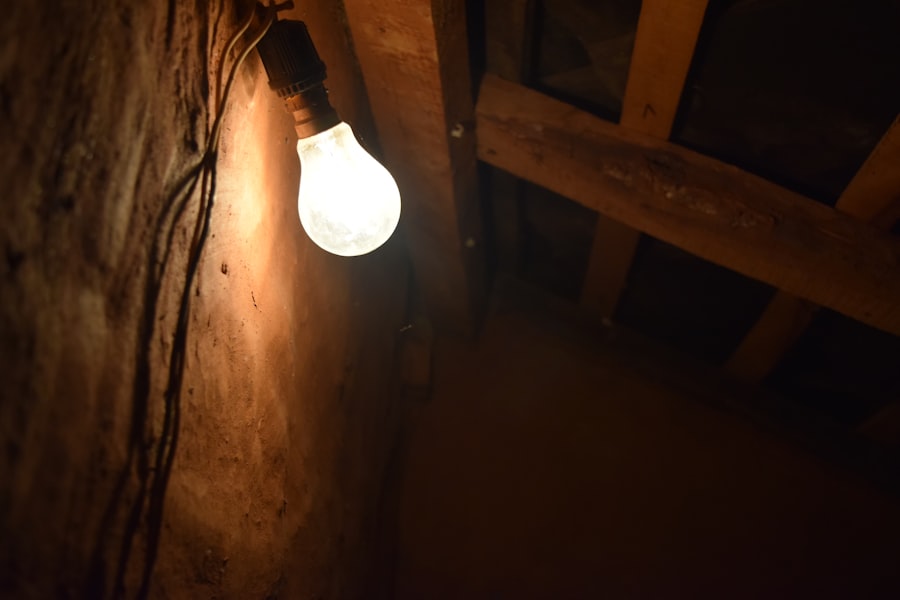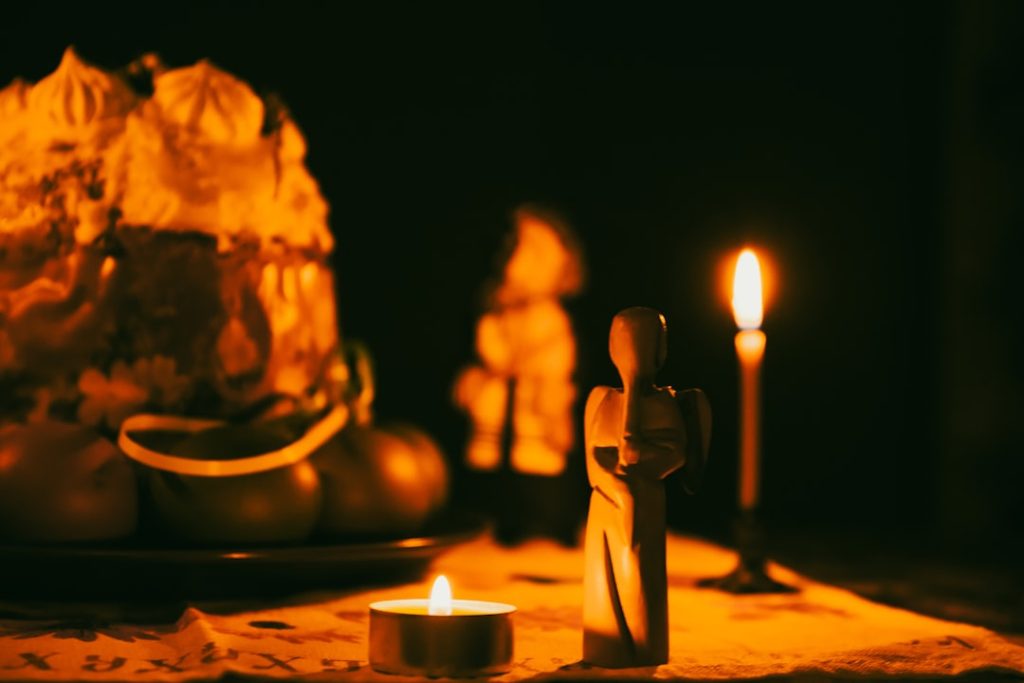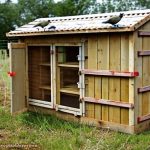Heat lamps are crucial for maintaining chicken health and comfort, particularly during cold weather. Chickens require specific temperature conditions to thrive, and exposure to cold can result in stress, reduced egg production, stunted growth, and mortality. Heat lamps provide warmth that helps chickens maintain optimal body temperature, ensuring their well-being and productivity.
Beyond temperature regulation, heat lamps serve a vital role in preventing frostbite. Chickens are prone to frostbite on their combs, wattles, and feet, which can cause pain and potential infection. The warmth provided by heat lamps helps protect these vulnerable areas from cold-related damage.
For chicken owners, heat lamps are an essential tool in maintaining flock health. They create an environment that supports ideal temperatures and prevents cold-related health issues, contributing significantly to the overall welfare of the chickens.
Table of Contents
- 1 Understanding the Heating Needs of Chickens
- 2 Alternatives to Heat Lamps for Chickens
- 3 Risks and Benefits of Using Heat Lamps for Chickens
- 4 Factors to Consider When Deciding Whether to Use a Heat Lamp for Chickens
- 5 Tips for Safely Using Heat Lamps for Chickens
- 6 Making the Best Choice for Your Chickens’ Heating Needs
- 7 FAQs
Key Takeaways
- Heat lamps are important for providing warmth and comfort to chickens, especially during colder months or for young chicks.
- Understanding the heating needs of chickens is crucial for providing the right amount of warmth without overheating or causing stress to the birds.
- Alternatives to heat lamps for chickens include heated pads, radiant heaters, and insulated coops, which can provide warmth without the risks associated with heat lamps.
- The risks of using heat lamps for chickens include fire hazards, burns, and stress to the birds, while the benefits include providing essential warmth and promoting healthy growth.
- Factors to consider when deciding whether to use a heat lamp for chickens include the age of the birds, the climate, the coop design, and the availability of alternative heating options.
- Tips for safely using heat lamps for chickens include securing the lamp properly, using a guard to prevent direct contact with the birds, and regularly checking for any signs of damage or malfunction.
- In conclusion, making the best choice for your chickens’ heating needs involves weighing the risks and benefits of using heat lamps, considering alternative heating options, and prioritizing the safety and well-being of the birds.
Understanding the Heating Needs of Chickens
Ideal Temperature Ranges
The ideal temperature for adult chickens is between 50-70 degrees Fahrenheit. Young chicks, on the other hand, require a warmer environment of around 95 degrees Fahrenheit for the first week of life. The temperature should decrease by 5 degrees each week until they reach the same temperature range as adult chickens.
Natural Heat-Retention Mechanisms
It’s important to note that chickens have natural ways of keeping warm, such as fluffing up their feathers and huddling together for warmth. However, in extreme cold conditions, these natural methods may not be sufficient to keep them comfortable and healthy.
Supplementing with Heat Lamps
This is where heat lamps come in handy, providing an additional source of warmth to supplement their natural heat-retention mechanisms. By understanding the specific heating needs of chickens at different stages of life and in varying weather conditions, you can ensure that your flock remains healthy and productive throughout the year.
Alternatives to Heat Lamps for Chickens
While heat lamps are commonly used to provide warmth for chickens, there are alternative heating options that can be considered. One popular alternative is the use of radiant heaters or brooder plates. Radiant heaters emit infrared heat that warms the surrounding objects and animals directly, similar to the warmth provided by the sun.
Brooder plates, on the other hand, provide a warm surface for chicks to snuggle under, mimicking the warmth of a mother hen. These alternatives can be effective in providing warmth without the potential fire hazard associated with heat lamps. Another alternative heating method is using heated pads or mats specifically designed for poultry.
These pads are placed under the bedding in the coop or brooder and provide a gentle, consistent source of warmth. Additionally, some chicken owners opt for insulating their coops or using heat-retaining materials to help maintain a comfortable temperature for their flock without relying solely on heat lamps or other heating devices. While these alternatives can be effective in providing warmth for chickens, it’s important to carefully consider the specific needs of your flock and the potential risks and benefits of each heating option.
Risks and Benefits of Using Heat Lamps for Chickens
While heat lamps are effective in providing warmth for chickens, they also come with certain risks that need to be carefully considered. One of the primary risks associated with heat lamps is the potential fire hazard. Heat lamps can pose a fire risk if they come into contact with flammable materials such as bedding, feathers, or dust in the coop.
Additionally, if not properly secured, heat lamps can fall and cause injury to the chickens or ignite a fire. It’s essential to take precautions such as using a secure mounting system and regularly checking the condition of the heat lamp to minimize these risks. On the other hand, the benefits of using heat lamps for chickens are significant.
Heat lamps help maintain a consistent and comfortable temperature for chickens, especially during cold weather or when raising young chicks. They also play a crucial role in preventing cold-related health issues such as frostbite and cold stress. By providing a reliable source of warmth, heat lamps contribute to the overall well-being and productivity of the flock.
When used responsibly and with proper safety measures in place, heat lamps can be an invaluable tool for ensuring the health and comfort of your chickens.
Factors to Consider When Deciding Whether to Use a Heat Lamp for Chickens
When deciding whether to use a heat lamp for your chickens, there are several factors to consider. Firstly, it’s important to assess the specific heating needs of your flock based on their age, breed, and environmental conditions. Young chicks require more warmth than adult chickens, and certain breeds may be more or less tolerant to cold temperatures.
Additionally, consider the climate in your area and how it may impact the temperature inside the coop or brooder. Another factor to consider is the safety measures you can put in place to minimize the risks associated with using heat lamps. This includes using a secure mounting system, keeping the heat lamp away from flammable materials, and regularly inspecting the condition of the heat lamp and its surroundings.
It’s also important to have a backup heating plan in case of power outages or equipment failure. By carefully evaluating these factors and weighing the potential risks and benefits, you can make an informed decision about whether to use a heat lamp for your chickens.
Tips for Safely Using Heat Lamps for Chickens

Choosing the Right Heat Lamp
Always use a high-quality heat lamp specifically designed for agricultural use, as these lamps are built to withstand the rigors of a farm environment.
Proper Installation and Maintenance
It’s important to securely mount the heat lamp using a reliable system that can support its weight and prevent it from falling. Additionally, keep the heat lamp away from any flammable materials such as bedding, feathers, or dust in the coop or brooder. Regularly clean and inspect the area around the heat lamp to remove any potential fire hazards.
Additional Safety Precautions
It’s also advisable to use a heat lamp with a built-in safety feature that will automatically shut off if it overheats or falls. This added layer of protection can provide peace of mind and help prevent accidents.
Backup Heating Plan
Finally, have a backup heating plan in place in case of power outages or equipment failure to ensure that your chickens remain warm and comfortable at all times.
Making the Best Choice for Your Chickens’ Heating Needs
In conclusion, heat lamps play a crucial role in providing warmth for chickens and ensuring their well-being, especially during cold weather or when raising young chicks. However, it’s important to carefully consider the specific heating needs of your flock, as well as the potential risks and benefits associated with using heat lamps. By understanding alternative heating options and implementing safety measures, you can make an informed decision about how best to keep your chickens warm and healthy.
Ultimately, the well-being of your flock should be the top priority when deciding on a heating method. Whether you choose to use a heat lamp or explore alternative heating options, it’s essential to provide a comfortable and safe environment for your chickens year-round. By taking into account their specific needs and implementing proper safety measures, you can ensure that your chickens remain healthy, productive, and happy regardless of the weather conditions.
If you’re considering building a chicken coop, you may also want to think about where to put it. This article on where to put a chicken coop offers valuable insights into the best location for your coop to ensure the health and safety of your chickens. It’s important to consider factors such as sunlight, ventilation, and predator protection when deciding on the placement of your coop.
FAQs
What is a heat lamp for chickens?
A heat lamp for chickens is a source of supplemental heat provided to young chicks or adult chickens during cold weather to help them maintain their body temperature.
Do you need to keep the heat lamp for chickens?
The need for a heat lamp for chickens depends on the age of the chickens and the ambient temperature. Young chicks require a heat lamp to maintain their body temperature, while adult chickens may not need a heat lamp if they have access to a well-insulated coop.
At what age do chickens no longer need a heat lamp?
Chickens typically no longer need a heat lamp once they have developed enough feathers to keep themselves warm, which is usually around 6-8 weeks of age.
What are the risks of using a heat lamp for chickens?
The use of heat lamps for chickens can pose fire hazards if not properly secured and monitored. Additionally, overheating or improper positioning of the heat lamp can cause burns to the chickens.
What are alternative ways to keep chickens warm without a heat lamp?
Alternative ways to keep chickens warm without a heat lamp include providing a well-insulated coop, using heat pads or heated perches, and ensuring access to fresh bedding and draft-free shelter.
Meet Walter, the feathered-friend fanatic of Florida! Nestled in the sunshine state, Walter struts through life with his feathered companions, clucking his way to happiness. With a coop that’s fancier than a five-star hotel, he’s the Don Juan of the chicken world. When he’s not teaching his hens to do the cha-cha, you’ll find him in a heated debate with his prized rooster, Sir Clucks-a-Lot. Walter’s poultry passion is no yolk; he’s the sunny-side-up guy you never knew you needed in your flock of friends!







